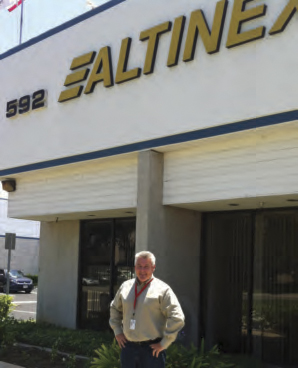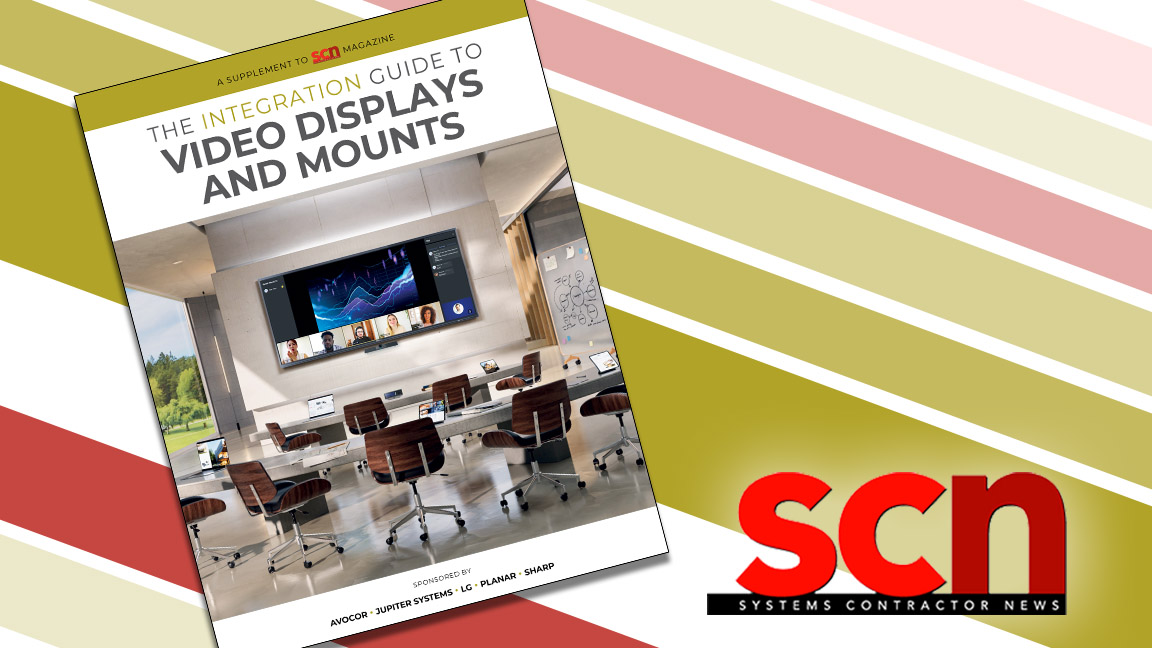Altinex VP Grant Cossey Sees Power in Relationship Building

Quick Bio
NAME: Grant Cossey
COMPANY: Altinex
TITLE: Vice President of Sales
OVERTIME: Cossey began selling AV in New Zealand and Australia before transferring to the U.S.
SCN: How did you arrive in the AV industry?
Grant Cossey: I started in pro AV selling projectors for a division of Anderson Audio Visual in New Zealand in the mid ’90s. It was the early days of the AV industry and “portable projection” was a transparent 256-color LCD tablet that sat on top of a super-bright overhead projector. Tablets and OHPs were leaps ahead of fixed installation three-gun CRTs that were used until that point. 35mm slides were still being used. Tablets then morphed into portable LCD projectors and then we became involved in VTC (Video Tele Conference) and integration. From New Zealand, I transferred to Australia and ran the Asia/Pacific division for five years before transferring to the U.S.
SCN: You’ve worked on both the integration and manufacturing sides of the AV business over the course of your career. What do you feel these two enterprises could learn from each other in terms of business operations?
GC: There are a couple of parts to this. First, any business relationship needs to be treated as a partnership. It doesn’t matter if it’s client/ integrator or integrator/manufacturer. In order for it to work, it needs to operate much like any good relationship—with trust, openness, and respect. Be deeply honest. We’re all in this together and working with these fundamentals will ensure you get the most out of the relationship. This relationship is ultimately about everyone having a profitable business. Secondly, understanding lead times is huge. Just like there is lead time for a project to be installed on a client’s site, there is also lead time in manufacturing. In today’s consumer driven, on-demand society, I still struggle with planning lead times for IC chips that extend to 40 weeks or longer. It can make production planning really tough—especially for new products.
SCN: Much of your experience is with the federal government and military verticals. How does the expertise required for those markets apply across other AV markets?
A daily selection of the top stories for AV integrators, resellers and consultants. Sign up below.
GC: Know your client and stay in control of your project. Don’t be afraid to make tough decisions and stand your ground. Government departments and the military can be very demanding (and usually for good reason) but staying in control is paramount. It’s often easy for us to feel pressured into giving in and making promises that we may not, ultimately, be able to meet. Equipment selection is the same. Clients often have an idea of what they want to specify—but if you know that it won’t meet the installation/mission profile, should you really agree to install it? The truth and reality are very positive things to be embraced. Sometimes the best business decision is to walk away.
Grant Cossey has witnessed many firsts in AV, the most recent being Altinex’s Muse, whichdistributes power, video, and IR signals over Cat-6 cable. SCN: You joined Altinex in 2011 after developing Muse as a product idea with the management and engineering staff. The manufacturer has a long list of technology firsts over its 20 years in business. What extra considerations have to be made when marketing and selling a new genre-defining product?

GC: Altinex is well known for doing things first. A large part of our early product development process is about market acceptability. Is the product going to fulfill a particular identified need or is it just something that we think is cool? A product needs to fit a real world need before it can be accepted. We also have a “no buts” part of our process— electrical safety for Muse, for instance. Early on, it was decided that no matter how cool and safe we thought Muse was, without an accepted and approved electrical safety inspection stamp like UL, we wouldn’t be able to bring it to market. You really need to be able to set yourself apart from competition—there are so many “me too” companies out there that just produce the same thing that is available from 10 other manufacturers. Where’s the value added? What can I do to influence a buying pattern if my product is identical to everything else on the market? Our way is to go against the norm and make something that’s different and new.
SCN: Now that Muse is on the verge of shipping, what’s the best strategy for maintaining the momentum of industry buzz?
GC: For a groundbreaking product like Muse, it���s all about seeing to believe. The people that see it, touch it, and feel it become our greatest spokespeople. At InfoComm 2013, we had our best show ever because we had people that saw a Muse demonstration bring groups of other people back to see it too. We constantly heard “my friend saw Muse and told me I had to see it too…” You’ll see Altinex and Muse in many more regional shows and performing dealer training too. A webinar series and online videos are also planned. Because Muse is groundbreaking technology, it’ll also be very important for the industry to see large-scale deployment. This will help build industry acceptance. The demand for Muse is already very strong and preproduction orders are flowing in with one order alone being for 500 systems.
Kirsten Nelson is the editor of SCN.
